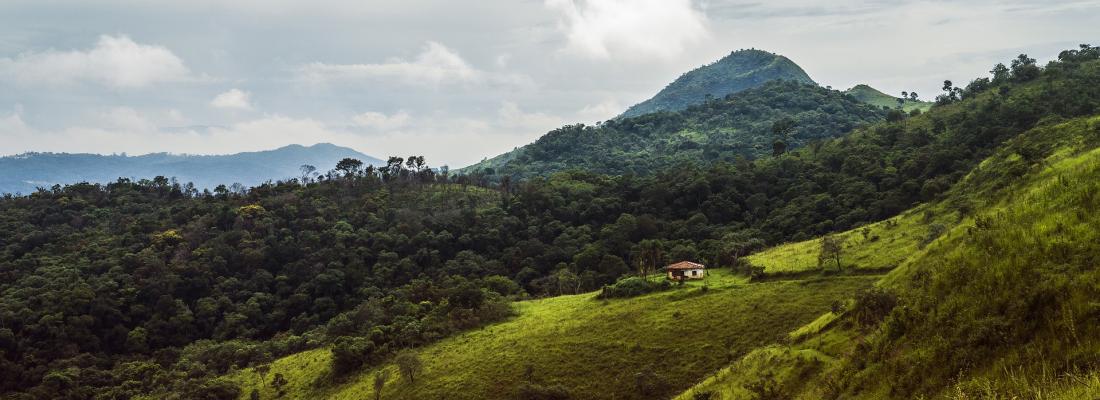Climate change and risks Reading time 3 min
Impacts of environmental degradation in the Amazon: Brazilian forest losing carbon over the past decade
Published on 30 April 2021

A change of government in Brazil in 2019 brought a sharp decline in the country’s environmental protection policies. But no study had ever quantified the impact of this policy change on carbon stocks in the Amazon. Indeed, while the extent of deforestation can be more or less accurately evaluated thanks to satellite images, many other types of forest degradation – any event that damages a forest without destroying it such as occasional cutting down of trees, forest fires or drought – are much harder to track. To date, one of the rare means of measuring the impact of degradation related to climate and human activity on carbon stocks (the forest biomass) depends on the satellite vegetation index L-VOD developed by scientists at INRAE, CEA and the CNRS (see 2020 press release). Using this index and a new technique for monitoring deforestation developed by the University of Oklahoma, the study evaluated changes in carbon stocks in the Brazilian Amazon between 2010 and 2019.
The study shows a sharp increase in deforestation in 2019 (3.9 million hectares), a 30% rise from 2015 when El Niño brought extreme drought, and a four-fold increase from 2017 and 2018. But in analysing the evolution of carbon stocks - in other words adding forest degradation to the equation - it turns out that carbon losses were three times higher in 2015 than in 2019. This points to a very significant climate impact on the forest during El Niño, linked to increased tree mortality and degradation due to fires.
Forest degardation is three times more detrimental than deforestation.
The findings, which reveal the bigger picture of the carbon-neutral balance of the whole of the Amazon between 2010 and 2017 (see 2020 press release), show a historic trend reversal for the Brazilian forest. During the 2010-2019 period, carbon losses from the Brazilian Amazon outweighed gains by about 18%. This means that the Brazilian Amazon as a whole has lost some of its biomass, and therefore released carbon. The findings also show that at the root of these carbon losses is forest degradation, which is three times more detrimental than deforestation.
Beyond deforestation, the study shows that environmental protection policies must take forest degradations into account, in order to best protect forests and preserve their capacity to stock carbon, which is crucial for combatting climate change.
What is forest degradation?
The term forest degradation refers to any event that damages a forest without destroying it. Unsurprisingly, degradation is linked to deforestation, especially in weakened portions of a forest located on the perimeter of deforested zones. But it is also a direct result of the occasional cutting down of trees and forest fires. Moreover, climate events, such as drought, increase tree mortality and take a toll on a forest’s branches and leaves. While the extent of deforestation can be more or less accurately evaluated thanks to satellite images, many other types of forest degradation are much harder to track. To date, one of the rare means of measuring the impact of degradation related to climate and human activity on carbon stocks (the forest biomass) depends on the satellite vegetation index L-VOD developed by scientists at INRAE, CEA and the CNRS.
|
Reference Yuanwei Qin, Xiangming Xiao, Jean-Pierre Wigneron, Philippe Ciais, Martin Brandt, Lei Fan, Xiaojun Li, Sean Crowell, Xiaocui Wu, Russell Doughty, Yao Zhang, Fang Liu, Stephen Sitch, Berrien Moore III, Carbon losses from forest degradation exceed those from deforestation in the Brazilian Amazon during 2010-2019, Nature Climate Change 29 April 2021 DOI: https://dx.doi.org/10.1038/s41558-021-01026-5 |
